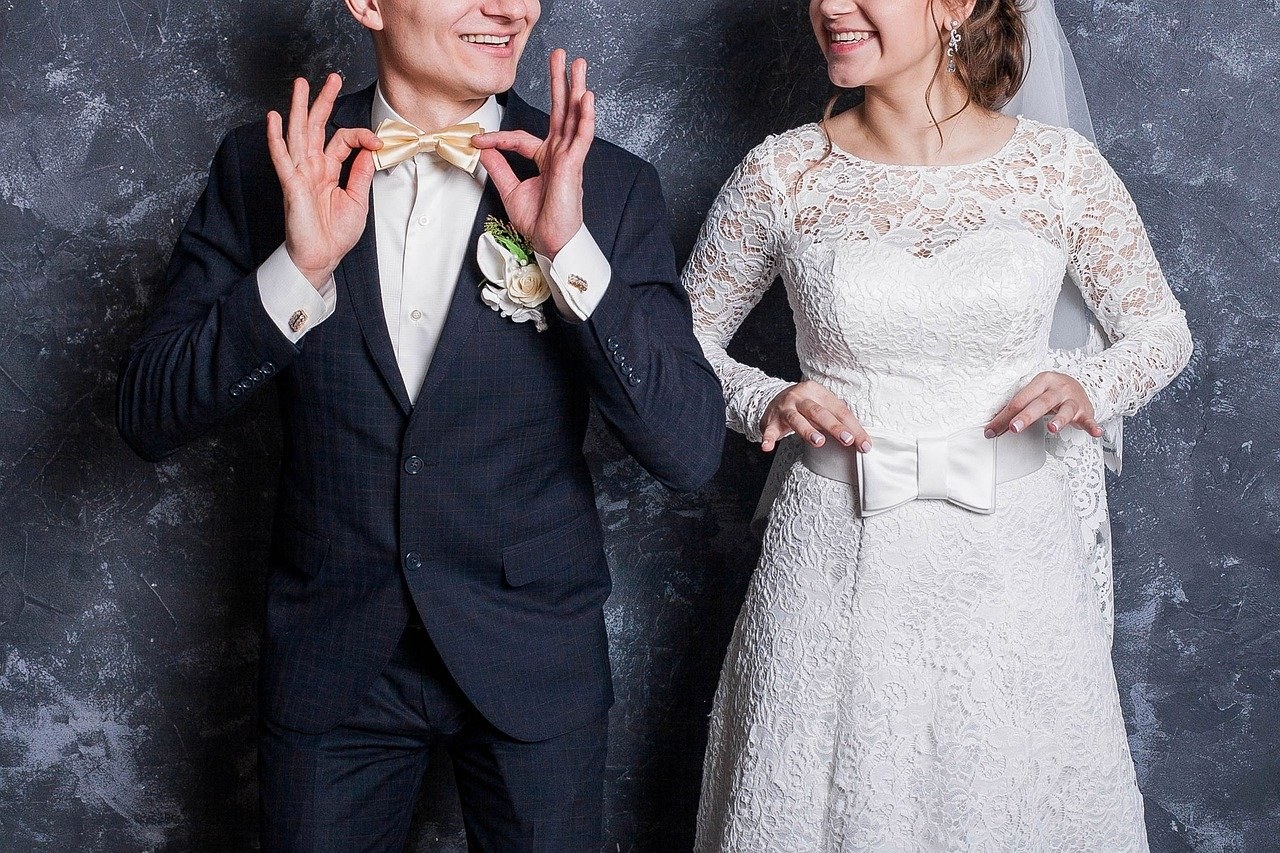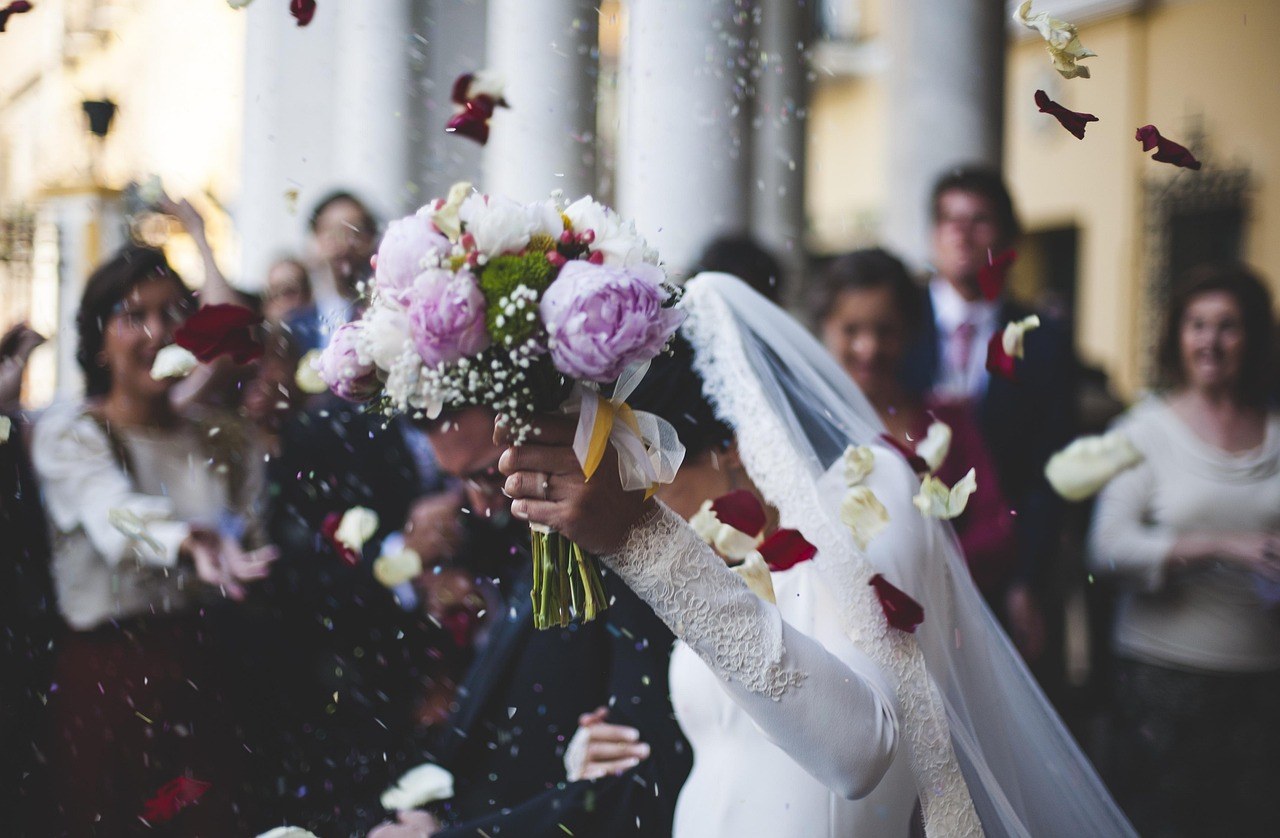Some customs feel tender and timeless at first glance, yet a closer look reveals roots that are practical, political, or plainly patriarchal. That tension is the heart of modern commitment: you and your partner can honor what matters and leave the rest behind. The aim isn’t to win a debate with history – it’s to build something that fits your real life. If you’ve wondered how certain practices began, or whether they still serve you, you’re not alone. Many couples are re-evaluating marriage traditions and choosing rituals that reflect mutual respect, consent, and shared purpose instead of automatic habit.
Choice over custom
There’s no single script for life together. Maybe your family expects a specific ceremony or set of domestic roles; maybe your friends swear by particular rituals. Those can be meaningful – or they can feel like obligations you never agreed to. A simple principle helps: if a custom strengthens your bond, it deserves space. If it undermines your well-being, it can go. That mindset reframes marriage traditions as tools rather than rules. You’re not rejecting heritage; you’re curating it.
These conversations land best before the legal “I do,” when hopes and logistics are both on the table. Talk through values, boundaries, and the kind of daily life you want to share. Sometimes preferences clash in surprising places: a surname, how holidays are spent, or whether a ring symbolizes partnership or ownership. By exploring expectations early, you avoid unspoken contracts and design a marriage that you both recognize.

How old customs shaped today’s expectations
Many practices we treat as romantic started as safeguards, bargains, or status displays. A bridal veil – so airy and delicate now – once served to hide the bride from the groom until vows were spoken, especially in arranged matches. The ring bearer, an adorable child carrying bands on a cushion, grew out of families showcasing wealth with fine textiles and precious metal. Even the “best man” role had a grittier subtext: he wasn’t only an honored friend but a failsafe to keep the ceremony on track if nerves or relatives interfered.
Then there are talismans and superstitions. Color choices, flower tosses, and aisle rituals promised good fortune or protection from jealous spirits. Over time these lost their literal meaning but kept social momentum – people continued doing them because everyone else did. When you see marriage traditions through that lens, it becomes easier to separate what still communicates love from what simply echoes a world where property rights and purity tests overshadowed personal agency.
None of this means you must abandon every inherited ritual. It means you can reinterpret them. You might keep a practice for its beauty while discarding its original purpose. Or you might swap it for a gesture that better reflects equality. A refreshed approach invites creativity – and it can turn once rigid expectations into personalized symbols of commitment.

Decisions to consider together
Below is a practical list of topics many couples discuss. Use it as a map, not a mandate. The point is to notice where automatic assumptions creep in, and then choose – actively – the marriage traditions that fit your values.
-
The proposal and who asks. Popular stories cast the man as the asker, complete with a knee drop and a sparkling ring. You can keep that script if it thrills you, or redesign it. Perhaps you propose to each other – sequentially or on the same day. Perhaps there’s no surprise at all, just a joyful decision reached together over coffee. Some families expect a “blessing” request; others find that step antiquated. Decide whether that conversation would feel respectful or reductive. When you treat proposals as a shared milestone, you transform old cues into marriage traditions that emphasize consent and mutual enthusiasm.
-
Rings and what they represent. A ring can be an endless circle of devotion – or it can feel like a label you didn’t choose. Consider what the symbol means to each of you. Do you want engagement rings, wedding bands, both, or neither? Will you wear them daily? Would another token – a watch, a bracelet, a book inscription – carry deeper meaning? Talk about practicality, budget, and comfort. If one partner dislikes jewelry, invent a different form of visible commitment so that your marriage traditions feel authentic, not performative.

-
Roles at home and at work. Traditional scripts set him in the workforce and her in the home. Many modern couples mix, match, and reassign responsibilities. List recurring tasks – earning income, paying bills, cooking, laundry, caregiving, social planning – and decide how to handle them now and in the future. Careers change, health shifts, children arrive or don’t. Build a system flexible enough to adapt. Equality isn’t a fixed split; it’s a living agreement you revisit. Treat this conversation itself as one of your core marriage traditions – a scheduled check-in that prevents resentment and keeps daily life fair.
-
Last names and identity. Surnames carry lineage and emotion. One partner taking the other’s name once signaled transfer from one household to another. Today, options abound: keep your names, create a new shared name, hyphenate, or have one partner switch while the other stays. Think about professional identity, personal history, and how you want to sound as a household. If children are part of your plan, consider how their names will reflect both sides. The best choice is the one you can explain with pride – another place where intentional marriage traditions replace automatic ones.
-
Vows – scripted or self-written. Classic vows promise care in all seasons, but wording like “obey” may clash with your values. You can select an existing template, edit phrases, or write your own. When composing personal vows, focus on specific behaviors – how you’ll communicate, mend rifts, and show up when it’s inconvenient. The performance is public, yet the promises are for private life. Treat the crafting of vows as a rehearsal for honest conversation, and let these words become living marriage traditions that guide you long after the ceremony.
-
Children, timelines, and alternatives. Many people assume marriage equals parenthood. It doesn’t. Decide whether you want kids, maybe want kids, or definitely don’t. Discuss timing, medical possibilities, adoption, fostering, and what a fulfilling life looks like in each scenario. Aligning on hopes reduces pressure from passing comments and family expectations. If you’re undecided, set a date to revisit the topic. That recurring dialogue is part of reshaping marriage traditions – one that respects evolving desires without leaving anyone in limbo.
-
Sleeping arrangements. Sharing a bed is common, yet sleep needs vary. Snoring, shift work, insomnia, and temperature preferences can strain rest and romance. Normalize experimentation: two duvets, separate mattresses, or even separate rooms that you treat as a single shared space. There’s nothing unloving about designing sleep that works. You can keep bedtime intimacy – cuddles, reading, conversation – and still prioritize rest. Making sleep a conscious choice is a small but powerful way to modernize marriage traditions .
-
Money management. Will you merge accounts, keep them separate, or create a hybrid? Who pays which bills, and how will you handle different incomes? Transparency prevents confusion – share debts, savings, and spending styles. Agree on thresholds that require joint discussion and on fun money that needs no justification. A regularly scheduled budget chat – calm, brief, and judgment-free – becomes one of the most stabilizing marriage traditions you can build.
-
Household labor and “invisible” tasks. Cooking and cleaning are obvious. Less visible are tasks like remembering birthdays, arranging childcare, buying gifts, and managing repairs. List everything, then divide based on skill, time, and preference. Rotate occasionally so no one gets stuck with the same unglamorous job forever. Consider a monthly swap – a playful ritual that keeps empathy high. Turning fairness into routine is how marriage traditions protect love from burnout.
-
Holidays and family expectations. Whose table hosts major celebrations? How long do visits last? Are there non-negotiable events each year? Combine creativity with boundaries: alternate locations, split a day between families, or create a new celebration just for the two of you. Communicate plans early to reduce pressure. When you design a holiday calendar that reflects your shared values, you replace inherited assumptions with intentional marriage traditions that feel festive instead of obligatory.
-
Wedding-day customs you may keep or skip. Not every choice is about daily life; some are about symbolism. Tossing a bouquet, wearing white, or assembling a large wedding party might thrill you – or not. If a tradition’s roots feel off, repurpose it. Maybe flowers are handed to someone you admire for their support. Maybe attire reflects personal style rather than a color code. Each tweak reminds guests that your marriage traditions are built on meaning, not mimicry.
-
Rituals for conflict repair. Disagreements are inevitable; how you repair matters. Create a process – a time-out phrase to pause arguments, a weekly check-in to clear small frustrations, an apology formula that names impact rather than intent. Add a reconnection ritual afterward, like a walk or shared meal. Embedding repair into your routine transforms conflict from rupture into learning. These are quiet but mighty marriage traditions that keep intimacy resilient.
-
Intimacy and affection. Romance doesn’t have to wait for special occasions. Decide how you’ll nurture closeness: scheduled date nights, tech-free hours, or simple daily gestures – a note by the coffee maker, a hug before leaving the house, a check-in text mid-day. These habits aren’t mechanical; they’re scaffolding for spontaneity. When affection becomes part of your shared rhythm, your marriage traditions reinforce the connection they celebrate.
-
Community, faith, and meaning-making. For some couples, spiritual or cultural practices are non-negotiable; for others, community looks like volunteering, book clubs, or weekly dinners with friends. Identify the gatherings that nourish you. If your backgrounds differ, alternate ceremonies or blend them thoughtfully. The goal isn’t to erase difference but to build a container that honors both. In doing so, your collective marriage traditions become a bridge rather than a battleground.
-
Anniversaries and milestones. Gifts and getaways can be lovely, but meaning comes from intention. Choose a ritual that fits your style: revisit the place where you decided to marry, write letters you read aloud each year, cook a meal from your early days. If life is hectic, mark half-hours rather than whole weekends. Consistency over spectacle keeps the memory of your promises fresh – and turns anniversaries into living marriage traditions .
-
Care networks and support. Who shows up when one of you is ill, overworked, or grieving? Map your circle – friends, neighbors, relatives – and agree on how to ask for help. Create a plan for meals, rides, pet care, or childcare during crunch times. Treat community as part of your marital ecosystem. When support is normalized, you resist the idea that couples must handle everything alone, and you cultivate sustainable marriage traditions grounded in reciprocity.
Reframing origins without romanticizing them
When you know that veils once shielded faces for practical – even transactional – reasons, you get to decide what a veil means now. When you realize that a ring bearer’s cushion advertised wealth, you can enjoy the sweetness without chasing status. And when you remember that an extra man at the groom’s side once ensured the ceremony happened regardless of the bride’s jitters, you can reimagine the wedding party as a circle of mutual cheerleaders. Knowledge doesn’t ruin the magic; it clarifies it. It lets you say yes with intention and no without guilt. This clarity is what turns old scripts into present-tense marriage traditions that actually serve love.
Be alert to language that sneaks in hierarchy: “giving her away,” “the head of the household,” “a good wife should.” Updating vocabulary is a small change with big effects. Words shape expectations; expectations shape behavior. Rewriting a phrase can rewrite a pattern – a quiet but meaningful step toward equality inside your home. In that spirit, even classic gestures can evolve. A shared aisle walk, two rings exchanged with equal ceremony, or vows that emphasize partnership over possession – each is a way of editing history while keeping what’s beautiful.
Designing a marriage that fits you
There’s no finish line where you permanently “solve” every question. Lives unfold. Careers pivot, health shifts, families expand or contract, priorities realign. Build in periodic reviews – quarterly, on your anniversary, or whenever a major change happens. Ask: What’s working? What feels heavy? What did we promise that needs amending? Treat flexibility as a virtue and iteration as proof that you are paying attention. In other words, make reflection itself one of your signature marriage traditions .
Above all, measure success by the quality of your daily life: honest communication, shared laughter, steady care. If a custom helps you cultivate those, keep it. If it distracts you, reshape it or let it go. The past offers plenty of raw material; you get to choose what becomes part of your future. With curiosity and courage, marriage traditions stop being a checklist and become a craft – one you and your partner refine together, day by day.